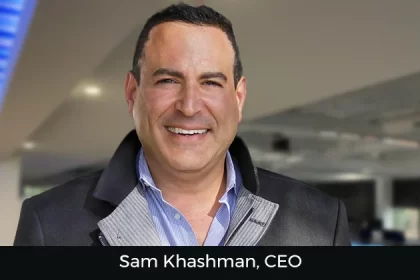Assistive technology refers to the device or software used to simplify the learning experience. In the realm of education, assistive technology is widely used by educators to help students with disabilities learn and process knowledge in a better way. While learning these five assistive technology examples, we can apprehend the salience of these technologies in empowering specially-abled learners.
Assistive Technology in Education
Aiding students with disabilities and other learning needs has eased with recent advances in technology. Assistive technology (AT) has emerged as a boon to specially-abled children’s learning and development. AT refers to a wide array of tools, software, and devices specially designed to help children with disabilities. As a crucial part of inclusive education, this technology is revolutionizing the domain. With the help of this technology, these children can now learn, function, and communicate effectively, eliminating their learning barriers. It also gives a personalized learning experience, catering to the individual needs of every specialized child.
An insight into the various assistive technology examples would help understand the diverse facilities these technological aids offer in inclusive education.
Top 5 Examples of Assistive Technology
Here are the top 5 Assistive technologies crafted to cater to specific learning needs of disabled children. Let’s see how these technologies are reshaping the landscape of special education-
- Braille Display
Learning without being able to see is extremely challenging, especially in this rapidly advancing educational environment. In order to aid children with vision impairment, the conventional braille learning method has now been upgraded with braille display technology. This technology translates digital text into braille characters to help blind or nearly blind children in their learning. This is an electro-mechanical device that displays braille characters through round-tipped pins. Deafblind computer users take the benefits of this technology.
- Speech Synthesis
Speech Synthesis is a multi-purposive technology that serves various learning needs of people with different impairments. This technology is often regarded as Text-To-Speech technology that translates written text into verbal words. It is an easy-to-use technology that bridges communication gaps for children with language or speech impairments. This technology is adaptable to most of the assistive, mobile, and computer devices. Speech synthesis software is customizable for specific user needs.
- Talking Calculator
This is one variant of speech synthesizer assistive technology programmed to read and articulate numbers, symbols, any operation key pressed by the users, and answers to the solved problems. Students suffering from dyscalculia can use this technology for effective numerical calculation while learning.
- Graphic Organizers
Any kid grappling with the ability to express in written form can enjoy the benefits of this innovative assistive technology. Graphic organizers are programmed to offer various learning benefits, such as idea visualization and construction, sequencing information, increasing reading competency, and several others. The visually pictured thoughts generated by this technology usually demonstrate concepts, relationships between facts, and ideas that guide conceptual mapping and diagram-making.
People with learning disabilities often rely on visual thinking and learning, and using graphic organizers can foster their visual learning abilities and facilitate their problem-solving skills. Learning causal relationships between entities and brainstorming are also encouraged with this assistive technology.
- Alternative Input Devices
Children with mobility issues or any physical disabilities can rely on this advanced technology to use computers. In place of a traditional keyboard or mouse, adapted keyboards, trackballs, and other input devices are used to help students. In this regard, an example of this assistive technology can be discussed here. Customized keyboards as successful alternative input devices are designed to cater to specific customer needs. Children with dexterity issues can use keyboards with larger keys or high visibility to assist people with low vision.
Here are some examples of software that serves as assistive technology to foster inclusive education-
- Speechify: This a text-to-speech software that successfully captures texts and translates them in audio. Students suffering from dyslexia and ADHD generally use this software to read textbooks and other reading assignments.
- TactPlus: This 3D imaging printer and braille software is utilized by educational institutions to create Braille pages in minutes. The audio instructions crafted in this software help visually impaired users.
- Google Classroom: With multiple functioning and speech-to-text capabilities, Google Classroom is improving education accessibility and learning. This specially designed virtual classroom is highly compatible with other software and collaboratively creates an inclusive learning environment for students.
- Seeing AI: This Microsoft-designed audio guidance software specializes in aiding the low-vision community. Reading text aloud, describing surroundings and colors, and other audio guidance are some of the crucial features of this assistive software.
The benefits of assistive technology in education are multifaceted, specially programmed to empower inclusive education. With this technology, inclusive learning of specially-abled children has eased in various manners. From text-to-speech learning to conceptualized visual learning, these technologies are well-equipped.










